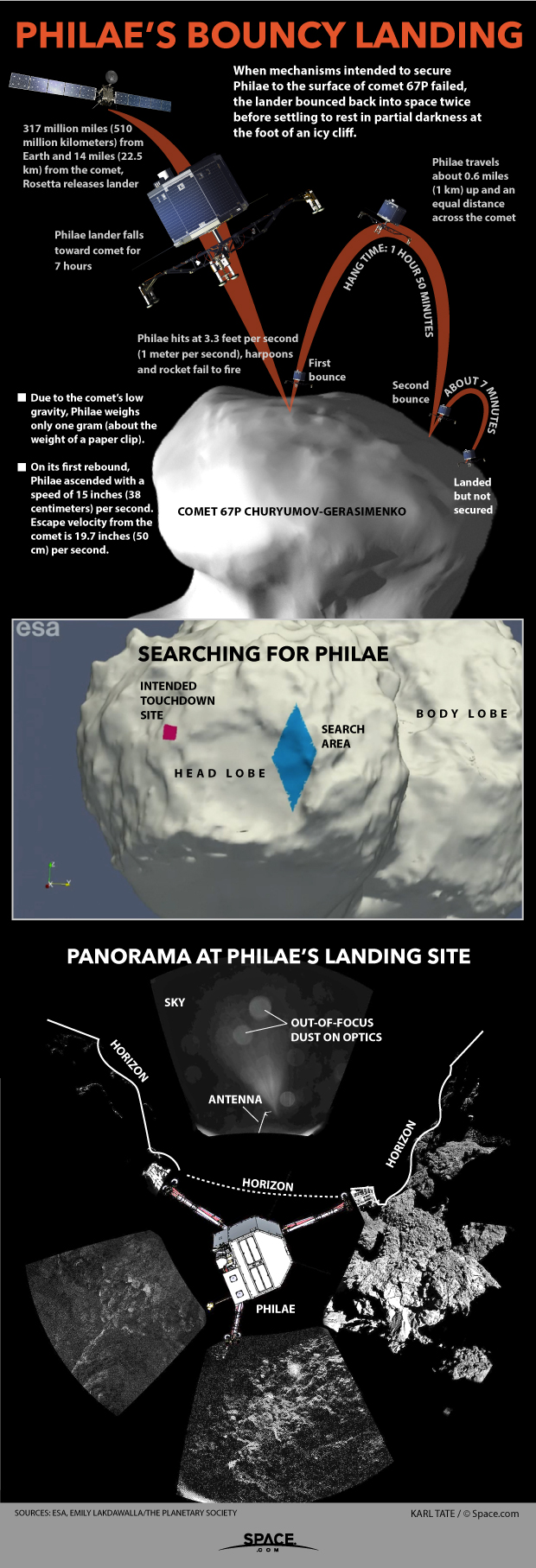How Harrowing Comet Landing by Philae Nearly Failed (Infographic)

On Nov. 12, 2014, the European Space Agency's Philae lander touched down on the surface of the Comet 67P/Churyumov-Gerasimenko. But the epic space feat — the culmination of ESA's Rosetta comet-chasing mission — could have ended in failure. Main Story: European Spacecraft Lands on Comet in Historic Space Feat
When mechanisms intended to secure Philae to the surface of Comet 67P failed, the lander bounced back into space twice before settling to rest in partial darkness at the foot of an icy cliff.
Rosetta Mission's Historic Comet Landing: Full Coverage
The action took place 317 million miles (510 million kilometers) from Earth and 14 miles (22.5 km) from the comet, Rosetta released the lander. Philae fell towards the comet for seven hours.
Philae hit the surface at 3.3 feet per second (1 meter per second). Harpoons and a rocket meant to secure the probe to the comet, failed to fire.
Photos: Europe's Rosetta Comet Mission in Pictures
In its first bounce, Philae traveled about 0.6 miles (1 km) up and an equal distance across the comet. Philae ascended with a speed of 15 inches (38 centimeters) per second. Escape velocity from the comet is 19.7 inches (50 cm) per second.
Breaking space news, the latest updates on rocket launches, skywatching events and more!
After a second bounce lasting about seven minutes, Philae finally came to rest on the surface.
- Comet Landing - Surface and Descent Pics Beamed To Earth | Video
- Best Close Encounters of the Comet Kind
- Comet Quiz: Test Your Cosmic Knowledge
- Philae Lands On Comet! - Mission Control Celebrates | Video
Follow us @Spacedotcom, Facebook and Google+.

Karl's association with Space.com goes back to 2000, when he was hired to produce interactive Flash graphics. From 2010 to 2016, Karl worked as an infographics specialist across all editorial properties of Purch (formerly known as TechMediaNetwork). Before joining Space.com, Karl spent 11 years at the New York headquarters of The Associated Press, creating news graphics for use around the world in newspapers and on the web. He has a degree in graphic design from Louisiana State University and now works as a freelance graphic designer in New York City.
